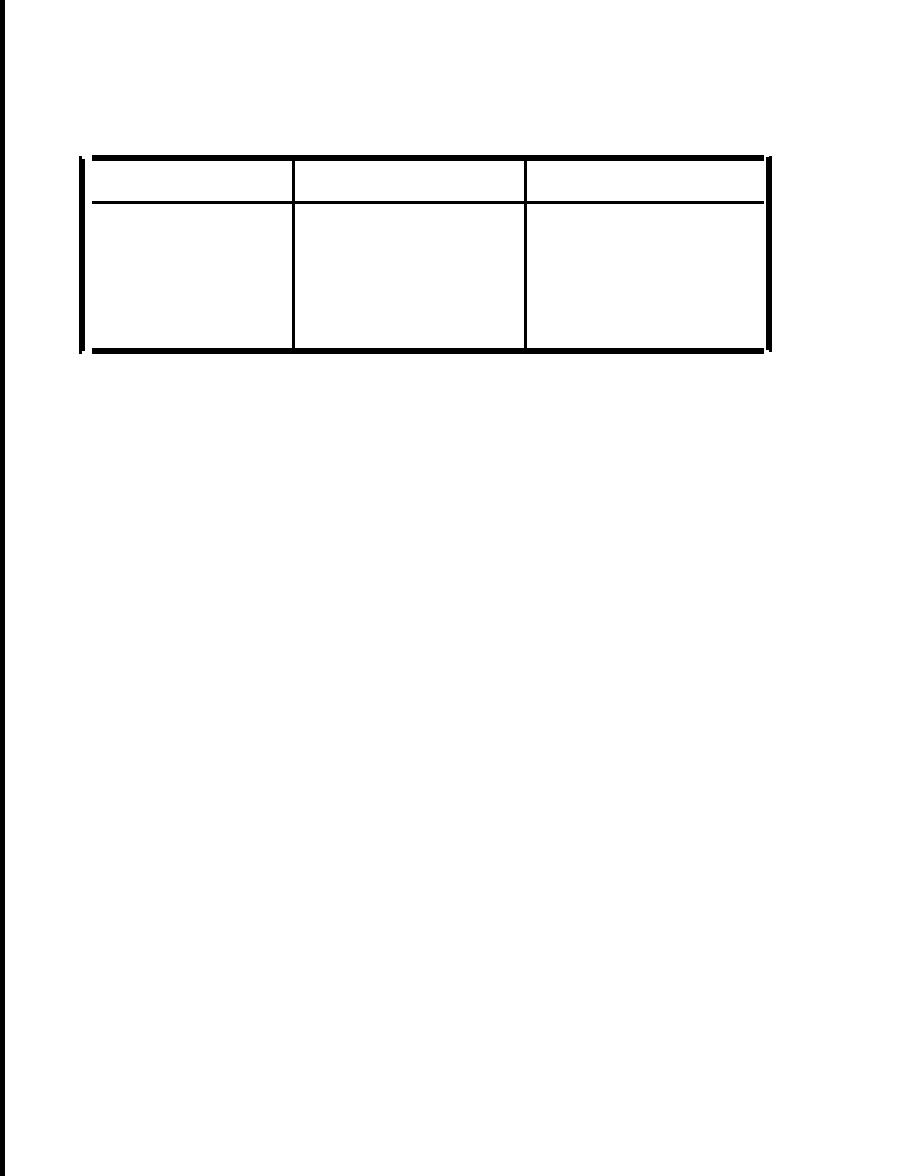

Custom Search
|
|

|
||
 TM 5-683/NAVFAC MO-116/AFJMAN 32-1083
Table 14-2. Condition of insulation indicated by dielectric absorption ratios.
10/1-MINUTE RATIO
60/30-SECOND
INSULATION
(POLARIZATION INDEX)
RATIO
COORDINATION
Less than 1
Dangerous
1.0 to 2
1.0 to
1.25
Questionable
2 to 4
1.4 to 1.6
Good
Above 4 **
Above 1.6 **
Excellent
*These values must be considered tentative and relative
- subject
to
experience
with the time-resistance method over a period of time.
**In some cases, with motors, values approximately 20% higher than shown here
indicate a dry brittle winding which will fail under shock conditions or during
maintenance, the motor winding should be cleaned,
starts.
For
preventative
treated, and dried to restore winding flexibility.
If the circuit is in service, remove one relay at a
reveal any cracks in the jewel. Should dirt be the
time so as no to totally disable the protection. Be-
problem, the jewel can be cleaned with an orange
fore the relay cover is removed, excessive dirt, dust
stick while the pivot can be wiped clean with a soft,
lint-free cloth. No lubricant should be used on either
and metallic material deposited on the cover should
the jewel or pivot. Should evidence of overheating
be noted and removed.Removing such material will
prevent it from entering the relay when the cover is
be found, the insulation should be checked and if
taken off. The presence of such deposits may indi-
brittle replaced. Withdrawal of the connection plug
cate the need for some form of air filtering at the
in drawout relays may reveal evidence of severe
station. "Fogging'' of the cover glass should be noted
fault currents or contaminated atmospheres, either
and cleared. Such fogging is, in some cases, a nor-
of which may indicate that a change in the mainte-
mal condition due to volatile materials being driven
nance schedule is necessary.
out of coils and insulation. However, if the fogging
(3) Mechanical adjustments. All connections
appears excessive, further investigation is neces-
should be tight. If several connections are loose,
sary. A check of the ambient temperature and the
excessive vibration may be indicated, and should be
supplied voltage and current must be compared to
corrected. All gaps should be free of foreign materi-
the nameplate or manufactured instruction book
als, if not, inspection of the gasket is necessary.
ratings.
Contact gaps should be measured and the values
compared with pervious measurements. Should
(2) Electrical tests. Manually close (or open) the
relay contacts and observe that they perform their
there be a large variation in these measurements,
required function; i.e., trip a breaker, reclose a
excessive wear may be indicated, in which case the
breaker, etc. Apply prescribed settings or ascertain
worn parts should be replaced. It may also be found
that they have been applied to the relay. Gradually
that an adjusting screw has worked loose and must
apply current or voltage equal to the tap setting to
be retightened. This information should be noted on
the relay to verify that the pickup is within speci-
the test record. All contacts, except those not recom-
fied limits. If miscalibrated, the restraining spiral
mended for maintenance, should be burnished and
spring can be adjusted. The data that this test
measured for alignment and wipe. Relays that oper-
yields should be compared to previous data. Reduce
ate after a time delay when subjected to an overcur-
the current or voltage until the relay drops out or
rent condition should have an operating time test
resets fully. This test will indicate excess friction.
performed. This test is made anywhere from two to
Should the relay be sluggish in resetting or fail to
ten times tap setting. The time it takes the relay to
reset completely, then the jewel bearing and pivot
trip must coincide with the manufacturer's recom-
should be examined. A magnifying glass is adequate
mended operating times. If not, then relay adjust-
for examining the pivot, and the jewel bearing can
ments should be made, if possible and the relay
be examined with the aid of a needle which will
retested. Readjustments may be necessary until the
14-4
|
 |
|
 |
||